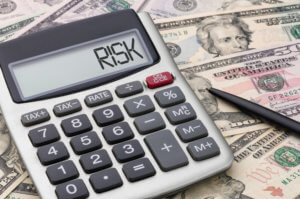What is CFD?
A contract for difference (CFD) is a form of derivative trading. CFD allows a trader to speculate on prices of global financial markets such as shares, indices, commodities, and of course, currencies. While trading CFDs, a trader gets to bet on both upside and downside movements of the market. The profit and loss for CFD are calculated by taking the difference between the entry and exit prices and multiplying it by the number of units. CFDs always comes with an expiration date, before which you need to close your position. Trading these CFDs may appear sophisticated and complex in the beginning, but once you start trading them, it becomes easy to handle.
Leverage trading CFDs
CFDs are a leveraged product, which means a trader needs to maintain an optimum level of capital in their trading account to execute a trade. As it is leverage/margin trading, this capital can only be a small percentage of the full position’s value. While margin trading allows a trader to magnify their returns, losses will also be more as a trader will lose leverage times the capital he is betting on. Hence it is always recommended to go for less leverage. If you are a novice trader, we suggest you not to go beyond 2X leverage. And obviously, the gains and losses will be based on the value of a CFD contract.
Costs involved while trading CFDs
There are three types of costs a trader may incur while trading CFDs. Each of them is explained below.
Holding cost – At the end of each trading day (mostly at 5 PM New York time), if the positions are open in your account, it will be subject to a charge called ‘holding cost.’ Holding costs will depend on the CFD, direction of the position, and the holding rate.
Spread – CFDs always come with a spread, which is the difference between the buy and sell price. This price is decided by the broker, and it varies from broker to broker. A trader will have to enter a buy trade at the buy price quoted by the broker, and exit using the broker quoted sell price. The narrower the spread, the less the price needs to move in trader’s favor for their profits to start. These spreads are extremely competitive across all the brokers.
Market data charges – For getting live market feed and accurate prices, a trader must pay the relevant market data subscription fees. However, this fee is mostly applicable to stock CDFs and varies from broker to broker.
Things to remember
Like any other market, there are high risks involved in trading CFDs as well. CFDs are complex in nature (at least for novice traders), they carry a high risk, so it is important to do your research before you start trading. Also, since CFDs are leveraged products, losses can easily exceed your total investment. In volatile markets, your account balance can drop down to zero or even to a negative balance in no time. Following best trading practices like proper applying risk management to your trades will increase the chances of profiting.
We hope you find this article informative. Let us know if you have any questions in the comments below. Cheers!





